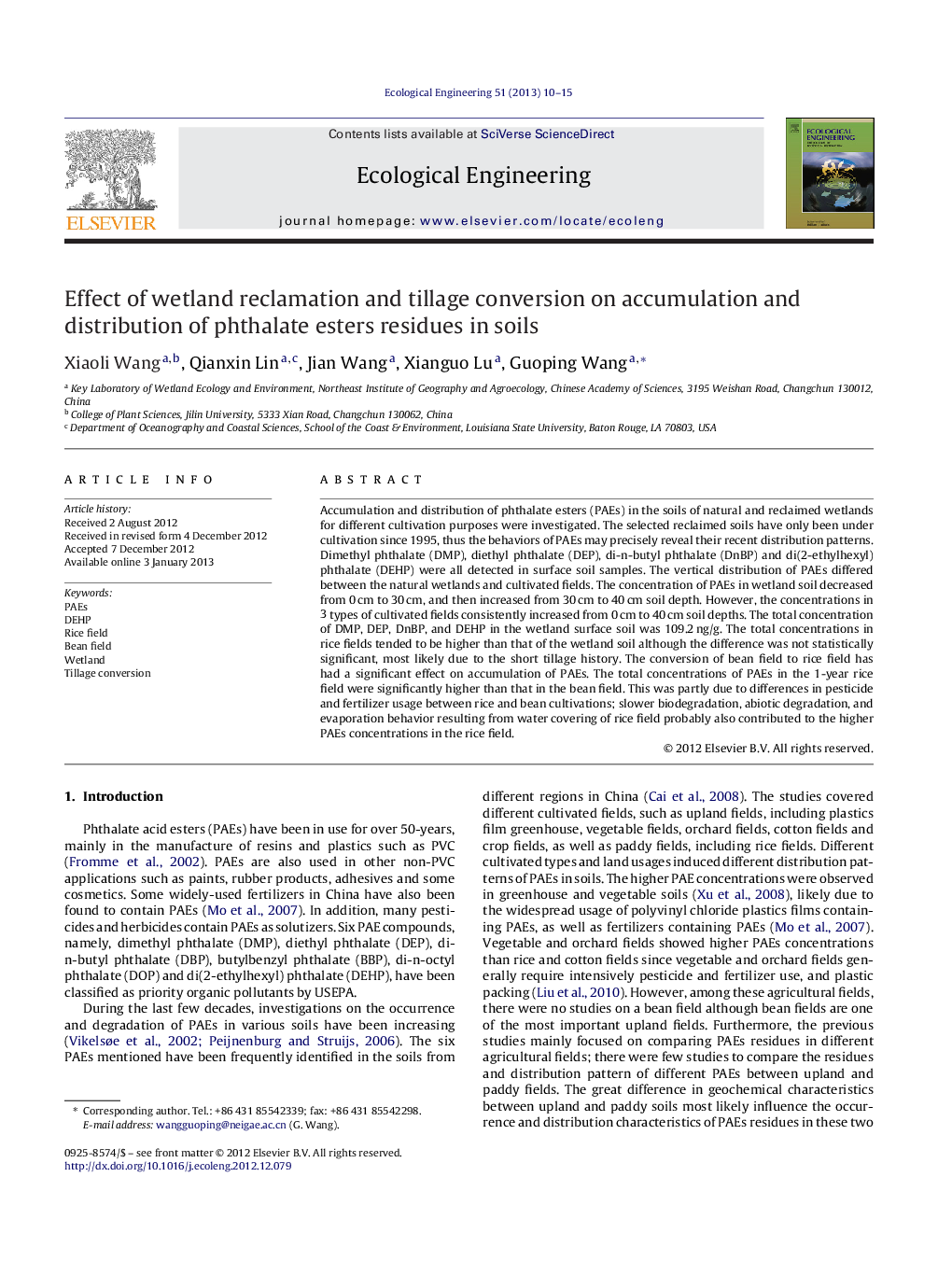| Article ID | Journal | Published Year | Pages | File Type |
|---|---|---|---|---|
| 4389823 | Ecological Engineering | 2013 | 6 Pages |
Abstract
Accumulation and distribution of phthalate esters (PAEs) in the soils of natural and reclaimed wetlands for different cultivation purposes were investigated. The selected reclaimed soils have only been under cultivation since 1995, thus the behaviors of PAEs may precisely reveal their recent distribution patterns. Dimethyl phthalate (DMP), diethyl phthalate (DEP), di-n-butyl phthalate (DnBP) and di(2-ethylhexyl) phthalate (DEHP) were all detected in surface soil samples. The vertical distribution of PAEs differed between the natural wetlands and cultivated fields. The concentration of PAEs in wetland soil decreased from 0Â cm to 30Â cm, and then increased from 30Â cm to 40Â cm soil depth. However, the concentrations in 3 types of cultivated fields consistently increased from 0Â cm to 40Â cm soil depths. The total concentration of DMP, DEP, DnBP, and DEHP in the wetland surface soil was 109.2Â ng/g. The total concentrations in rice fields tended to be higher than that of the wetland soil although the difference was not statistically significant, most likely due to the short tillage history. The conversion of bean field to rice field has had a significant effect on accumulation of PAEs. The total concentrations of PAEs in the 1-year rice field were significantly higher than that in the bean field. This was partly due to differences in pesticide and fertilizer usage between rice and bean cultivations; slower biodegradation, abiotic degradation, and evaporation behavior resulting from water covering of rice field probably also contributed to the higher PAEs concentrations in the rice field.
Keywords
Related Topics
Life Sciences
Agricultural and Biological Sciences
Ecology, Evolution, Behavior and Systematics
Authors
Xiaoli Wang, Qianxin Lin, Jian Wang, Xianguo Lu, Guoping Wang,
